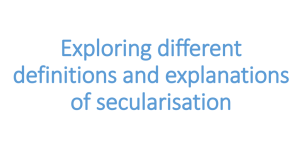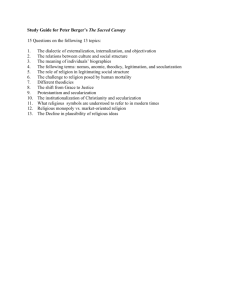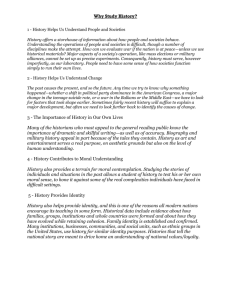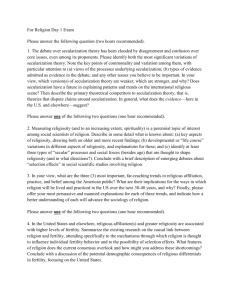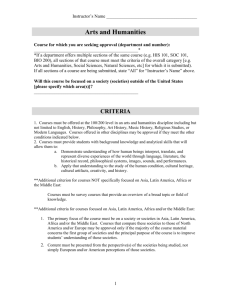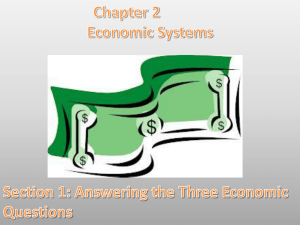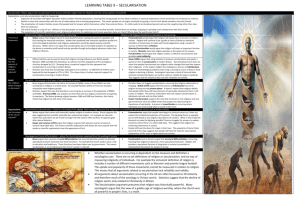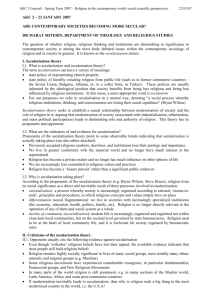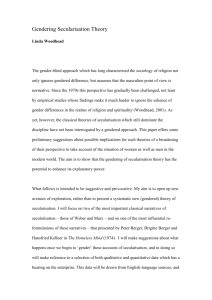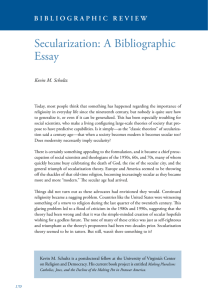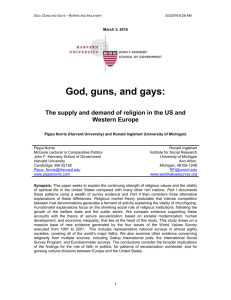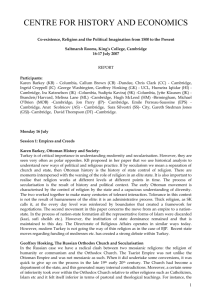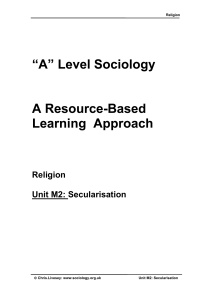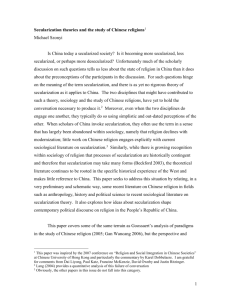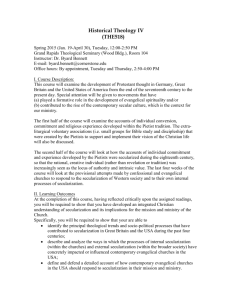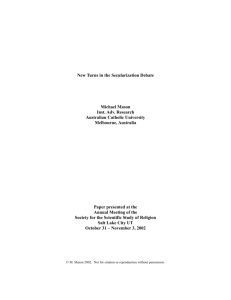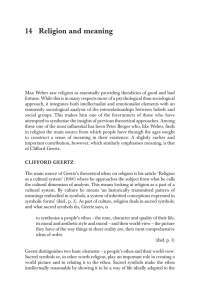pro_anti_secularisation
advertisement
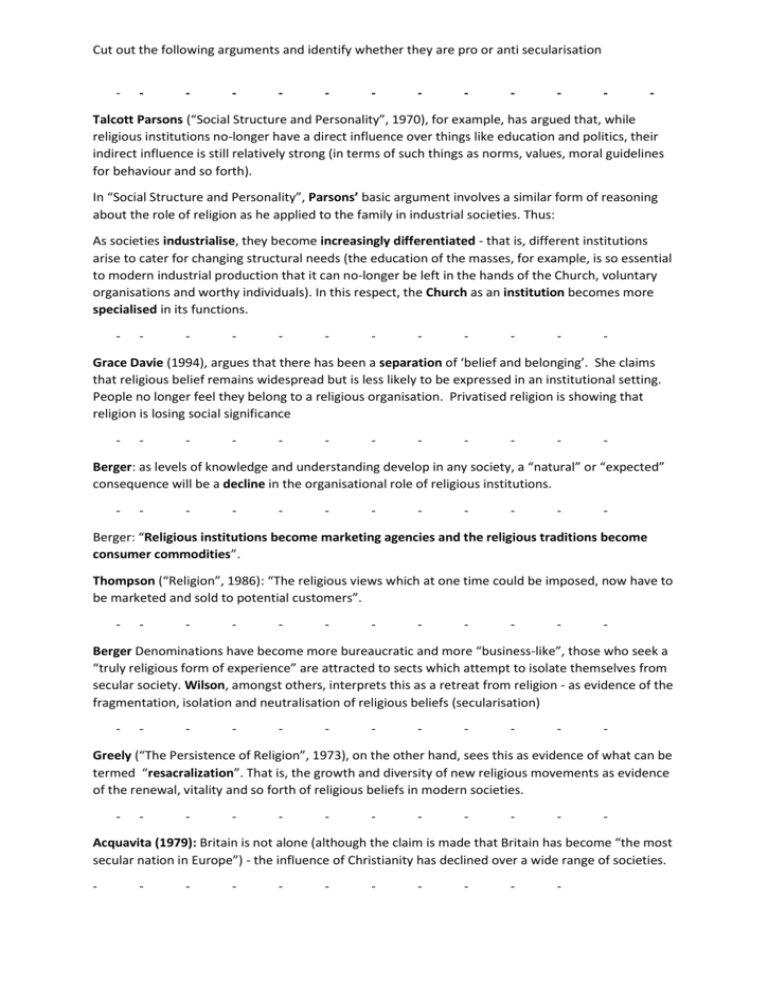
Cut out the following arguments and identify whether they are pro or anti secularisation - - - - - - - - - - - - - Talcott Parsons (“Social Structure and Personality”, 1970), for example, has argued that, while religious institutions no-longer have a direct influence over things like education and politics, their indirect influence is still relatively strong (in terms of such things as norms, values, moral guidelines for behaviour and so forth). In “Social Structure and Personality”, Parsons’ basic argument involves a similar form of reasoning about the role of religion as he applied to the family in industrial societies. Thus: As societies industrialise, they become increasingly differentiated - that is, different institutions arise to cater for changing structural needs (the education of the masses, for example, is so essential to modern industrial production that it can no-longer be left in the hands of the Church, voluntary organisations and worthy individuals). In this respect, the Church as an institution becomes more specialised in its functions. - - - - - - - - - - - - Grace Davie (1994), argues that there has been a separation of ‘belief and belonging’. She claims that religious belief remains widespread but is less likely to be expressed in an institutional setting. People no longer feel they belong to a religious organisation. Privatised religion is showing that religion is losing social significance - - - - - - - - - - - - Berger: as levels of knowledge and understanding develop in any society, a “natural” or “expected” consequence will be a decline in the organisational role of religious institutions. - - - - - - - - - - - - Berger: “Religious institutions become marketing agencies and the religious traditions become consumer commodities”. Thompson (“Religion”, 1986): “The religious views which at one time could be imposed, now have to be marketed and sold to potential customers”. - - - - - - - - - - - - Berger Denominations have become more bureaucratic and more “business-like”, those who seek a “truly religious form of experience” are attracted to sects which attempt to isolate themselves from secular society. Wilson, amongst others, interprets this as a retreat from religion - as evidence of the fragmentation, isolation and neutralisation of religious beliefs (secularisation) - - - - - - - - - - - - Greely (“The Persistence of Religion”, 1973), on the other hand, sees this as evidence of what can be termed “resacralization”. That is, the growth and diversity of new religious movements as evidence of the renewal, vitality and so forth of religious beliefs in modern societies. - - - - - - - - - - - - Acquavita (1979): Britain is not alone (although the claim is made that Britain has become “the most secular nation in Europe”) - the influence of Christianity has declined over a wide range of societies. - - - - - - - - - - - Cut out the following arguments and identify whether they are pro or anti secularisation Wilson has further suggested that the influence of religious institutions has declined to such an extent in Britain that: “Religion is no-longer news, except when a clergyman commits a moral misdemeanour.” - - - - - - - - - - - In totalitarian societies (for example, Eastern Europe under communism, some South American countries) where the State has a monopoly of political organisation and expression, the channels for political dissent that are open in democratic societies are closed. Political / economic dissatisfaction in such societies cannot find its expression in “normal” political activity. The role of the Church, in such societies, may be one of a “focus of dissent”, in that the Church may be the only “legitimate” way through which people can express their economic and political dissatisfaction. - - - - - - - - - - - Berger argues that the evidence for secularisation is inconclusive because religion has changed in form. In modern societies religion has become pluralistic (involving a number of different, competing, religious organisations) and privatised (a matter of individual choice). Because religion is seen, by Berger, as ideology (a meaning system for the interpretation of the world), he argues that religion is, by definition, “alive and well” because it represents, as far as we can tell, an indispensable element of human social life / existence. - - - - - - - - - - - Casanova (1994): He distinguishes three aspects of secularization & argues that religion has not faded away from public life. Casanova believes secularization starts with differentiation where the state, politics and the economy become separate from religion. Another aspect of secularization is the decline of religious beliefs and practices when fewer people take part in religious activities or believe in God. Privatization is another aspect of secularization and refers to the way in which religion stops playing any part in public or political life & no longer influences how politicians make decisions or how individuals in society chose to live their lives. * Casanova argues that religious beliefs and practices are not dying out, and that ‘public relations’ have increasingly re-entered Although religion is no longer as central and important to the state it is has not faded away and still has a part to play. BUT in other countries across the world, Casanova argues that deprivatization is taking place where religion is becoming more active in public and political affairs. - - - - - - - - - - - Martin argues religion is likely to increase in importance because: religion is no longer closely associated with rich & powerful elites, so religion has become more acceptable to those from lower classes. Rationalism has lost its appeal & there is growing interest in the supernatural and the religious to give hope to people. - - - - - - - - - - - Cut out the following arguments and identify whether they are pro or anti secularisation Bruce argued that religion serves two purposes for ethnic groups: cultural defence (a way of asserting ethnic pride in a state of conflict) or cultural transition (gives sense of continuity and security when emigrating to another culture). - - - - - - - - - - - Bruce argues opinion poll data shows weakening of religious beliefs. Some are moving to NRMs but such vague beliefs have little cultural influence & hardly affect people’s behaviour. Strong religion which dominates people’s lives, can’t be widespread in fragmented society while weak religion is more suited to fragmented societies where there is an acceptance that there may be more than one way to spiritual truth. Doesn’t accept that NRMs are soaking up people leaving churches as there are too few of them. Bruce believes secularization is still definitely happening in modern British society. - - - - - - - - - - - Heelas et al: The Kendal Project: This was an empirical study carried out in Kendal, Cumbria which found less people attending church, but more people becoming involved in the New Age & alternative spirituality. They categorized conventional, ‘normal’ religious congregations into three types of worshipper: those that focused on people living their own individual, unique lives; those that emphasized living their own unique lives but with clear guidelines on behaviour and those that ‘pay little or no attention to unique lives, and require them to be sacrificed on the altar of a higher good’ – in other words, they look to God for guidance and will obey Him, not their own spirit. The first type of group were most likely to become involved in New Age religions whilst the last group were most likely to remain in the bosom of the traditional church where teachings of the religion are expected to be obeyed with no question. The New Age was growing while the traditional religions were shrinking. This led the team to conclude that secularization was happening in the congregational domain at the same time as sacrilization (increased emphasis on the sacred) was taking place in the holistic milieu. - - - - - - - - - - - Almond et al: They agree with Bruce that secularization & modernization cause fundamentalism but offer broader factors to explain this. They argue that fundamentalism can be understood on three levels: i) the structural level is concerned with long-term contextual conditions like unemployment, war, persecuted ethnic groups (Palestine / Israel) or dislocated people & social changes. This misery can cause religious groups to mobilise. ii) Contingency & chance, where although structural events as described above do have an impact, fundamentalist activity also depends on which specific historical events have occurred (such as invasions etc). Human choice & leadership mean that fundamentalism will not develop without religious leaders who can mobilise large numbers of people in support of their religious beliefs. - - - - - - - - - - -
